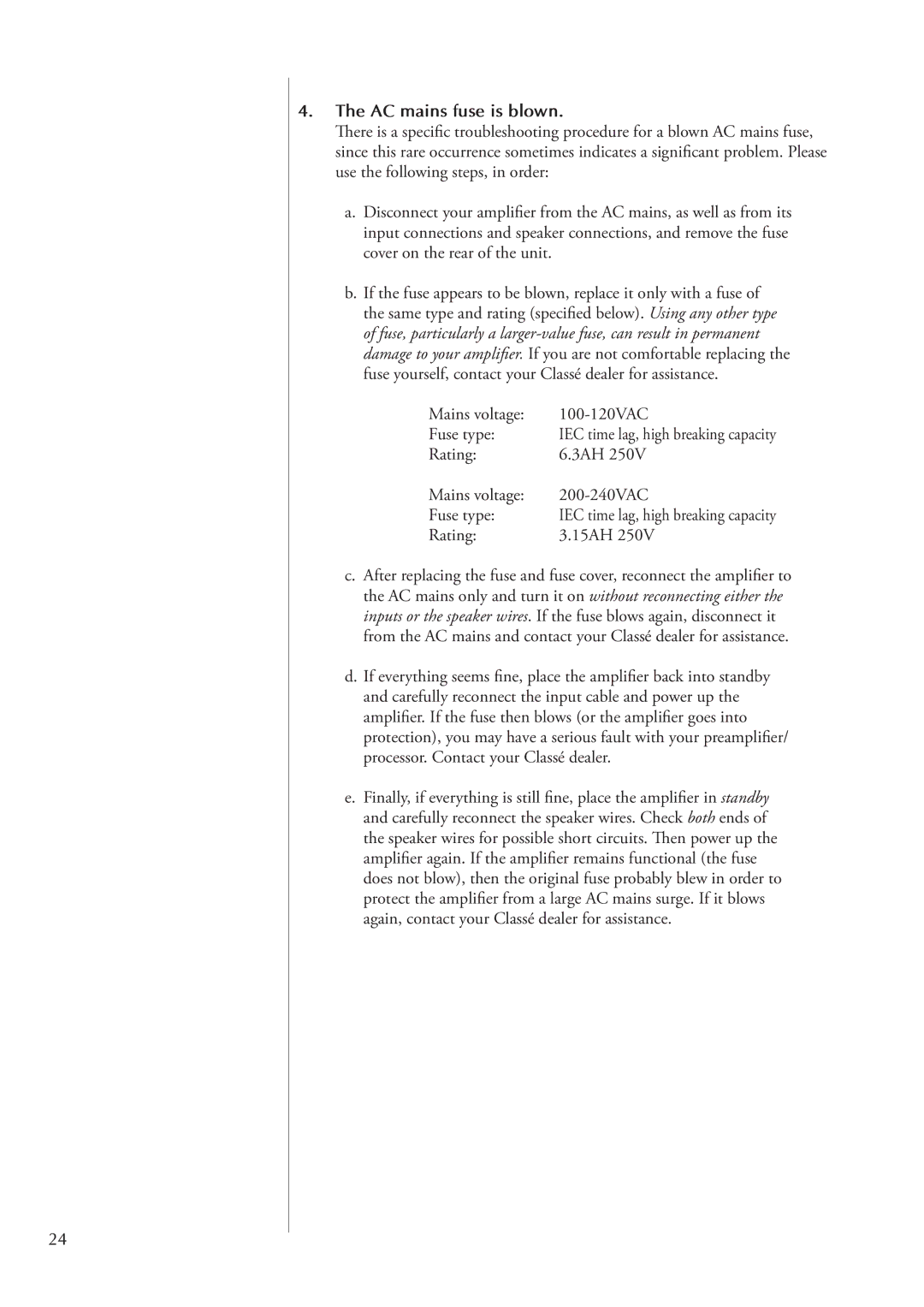24
4.The AC mains fuse is blown.
There is a specific troubleshooting procedure for a blown AC mains fuse, since this rare occurrence sometimes indicates a significant problem. Please use the following steps, in order:
a.Disconnect your amplifier from the AC mains, as well as from its input connections and speaker connections, and remove the fuse cover on the rear of the unit.
b.If the fuse appears to be blown, replace it only with a fuse of the same type and rating (specified below). Using any other type of fuse, particularly a
Mains voltage: |
|
Fuse type: | IEC time lag, high breaking capacity |
Rating: | 6.3AH 250V |
Mains voltage: |
|
Fuse type: | IEC time lag, high breaking capacity |
Rating: | 3.15AH 250V |
c.After replacing the fuse and fuse cover, reconnect the amplifier to the AC mains only and turn it on without reconnecting either the inputs or the speaker wires. If the fuse blows again, disconnect it from the AC mains and contact your Classé dealer for assistance.
d.If everything seems fine, place the amplifier back into standby and carefully reconnect the input cable and power up the amplifier. If the fuse then blows (or the amplifier goes into protection), you may have a serious fault with your preamplifier/ processor. Contact your Classé dealer.
e.Finally, if everything is still fine, place the amplifier in standby and carefully reconnect the speaker wires. Check both ends of the speaker wires for possible short circuits. Then power up the amplifier again. If the amplifier remains functional (the fuse does not blow), then the original fuse probably blew in order to protect the amplifier from a large AC mains surge. If it blows again, contact your Classé dealer for assistance.
